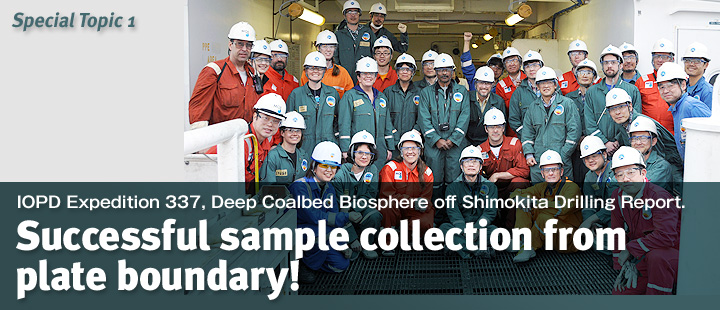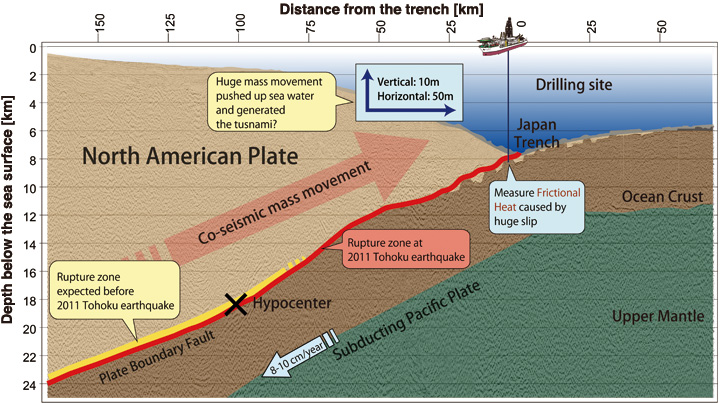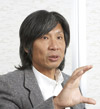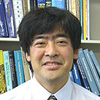
The Japan Trench Fast Drilling Project (JFAST) expedition was ready to launch in the unprecedented short time of only one year since the earthquake, with the aim of elucidating the mechanisms that produced the earthquake off the Pacific coast of Tohoku.
The scientists who sailed on the 54 day expedition were put to the test many times, and were pushed to operate at unprecedented depths.
(Published online August 2012)
Attempt to collect samples in fault area at unprecedented depth
On April 1st, 2012 deep sea scientific drilling vessel the CHIKYU sailed from Shimizu Port for the Japan Trench area, approximately 250km off the Sendai city.
The mechanisms behind the Tohoku earthquake of 11 March 2011 varied greatly from what scientists had previously anticipated. A new earthquake occurrence model was needed, specifically for the question of how the fault stretching up to the seafloor at the Japan Trench axis could possibly create the massive earthquake and huge tsunami. It is imperative to promote investigation and research into this, and make use of the results in our society.
The Japan Trench Fast Drilling Project(JFAST) expedition therefore undertook two challenges in direct drilling by the CHIKYU. One was to collect geological samples from the fault that was involved in the earthquake. Another one was to install measuring equipment (temperature sensors) inside the borehole and observe the frictional heat due to fault slip during the earthquake. In so doing we undertook to create the world’s first direct and dynamic picture of an earthquake.
The earth’s outermost layer is made up of tens of layers of bedrock called plates. In the Japan Trench area where the Tohoku earthquake originated, the Pacific Plate, which forms the floor of the Pacific Ocean, subducts beneath the North American Plate on which for instance the Tohoku region lays. The Tohoku earthquake occurred because of a massive slip of the boundary zone between these two plates.
After a slip has occurred there should be a fault, created at that time. Previous research leads us to expect that there will be a layer of clay containing a lot of water in the top strata in the Pacific Plate. We expected the fault causing the earthquake to be in this clay layer.
It is this fault that formed the target of the JFAST expedition.
Energy, which occurred the huge earthquakes, seemed to have been stored in the plate boundary between North American Plate and Pacific plate, and released suddenly as shaking, tsunami and friction heat around the hypocenter. Before the earthquake, it was not believed that plate boundary in this area store an energy, which caused such a mega earthquakes.
Just how much energy was stored at this plate boundary?
To obtain an answer to this question we needed to actually drill in the hypocenter area, set up temperature sensors and observe the frictional heat. We also needed to collect samples from that layer. To that end we had to drill from the North American Plate, through the plate boundary layers, to the Pacific Plate hidden underneath through 7,000m of water and a further 1,000m into the seafloor. There is no precedent for this kind of drilling project anywhere in the world.







